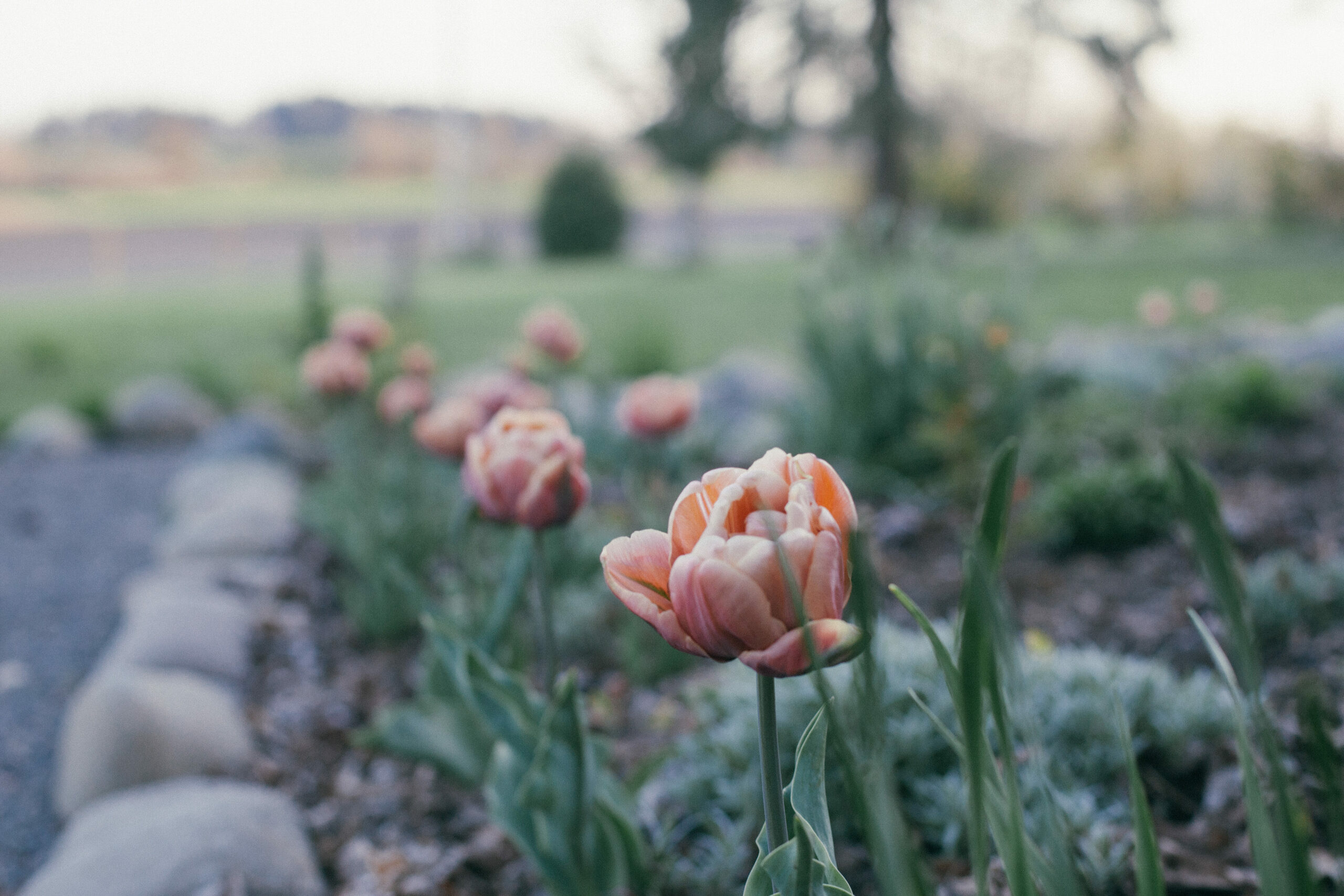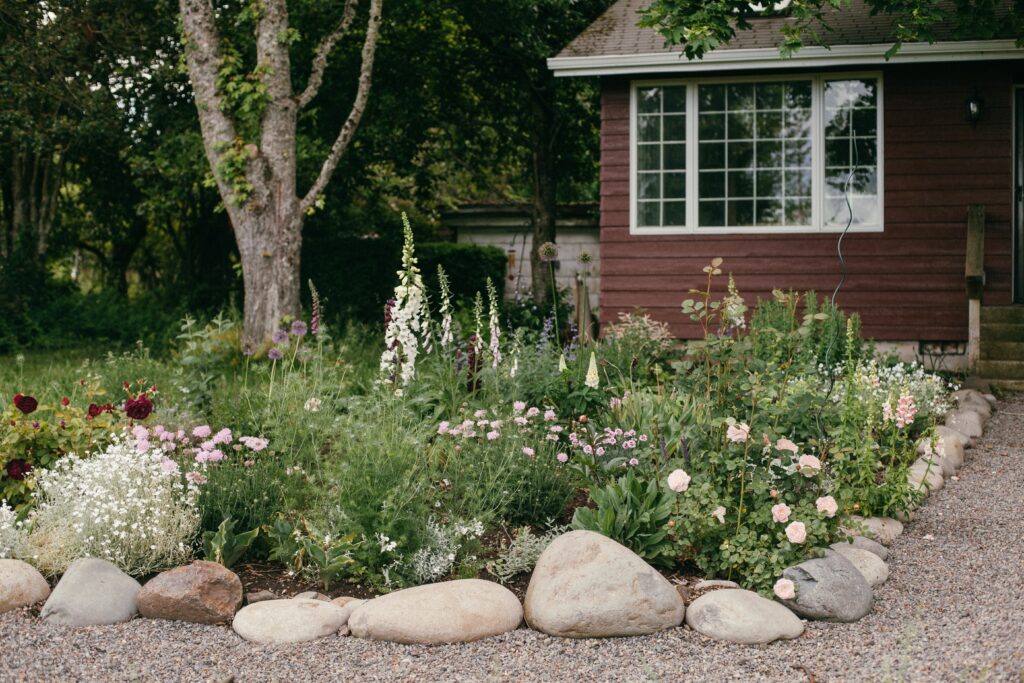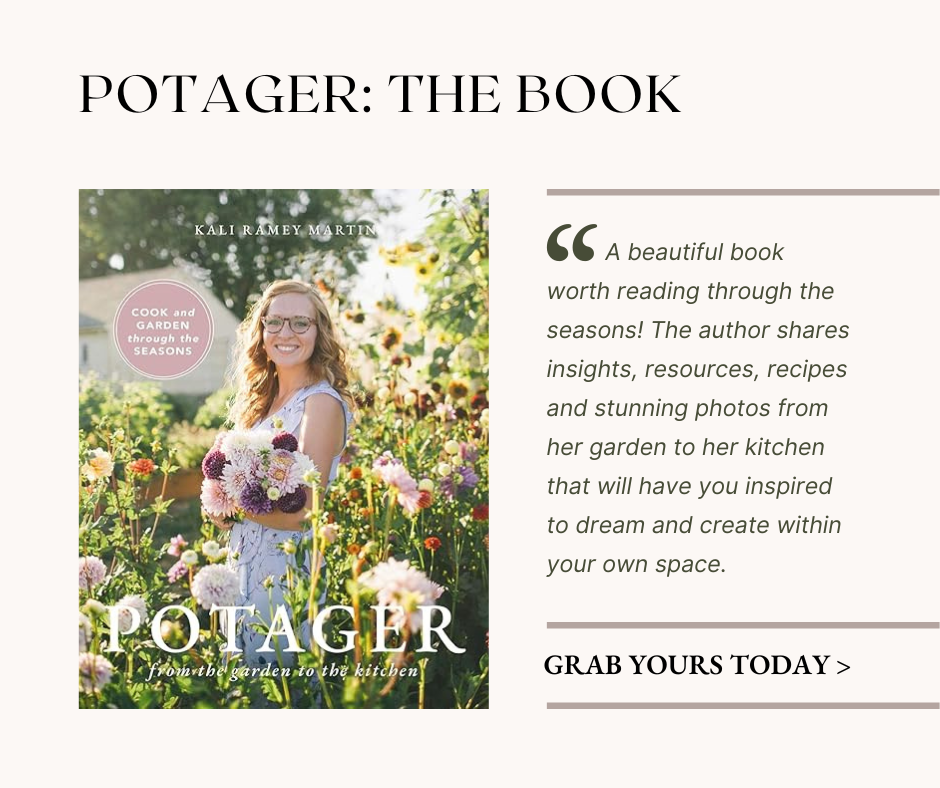
Have you ever found yourself asking the question, “Is it too late to…?” when it comes to gardening? Odds are, if you’re anything besides a professional gardener, you have. The seasons seem to sneak up on us so quickly, passing us by before we can catch our breath. Almost every Autumn I hear myself utter the phrase, “Is it too late to plant Spring bulbs?”
One of the things I love most about gardening is there are rarely hard and fast rules. It’s not something that needs to be handled in a mathematic, precise or exacting way. You certainly can take that approach, but that is definitely not my outlook. The garden is a place for instinct, emotion, artistic expression, experimentation and to be perfectly candid, learning!
I’m sure you, like me, do not need one more area of life that whispers “you’re failing?” So don’t let it! Treat the garden as a haven, not a have-to. And give yourself some grace!
The best time to plant Spring bulbs
If you look up “when is the best time to plant Spring bulbs” online, you’ll more than likely be met with September or October. 6 to 8 weeks before the soil freezes. Or something to the tune of “Fall.” See? Nothing exact about that. 6 to 8 weeks before the soil freezes could be never in some places! And there are bulbs grown successfully all over the world.
All that to say, take everyone’s advice with a grain of salt, and go with your gut. If you can still manage to dig deep enough into your soil to tuck a flower bulb in, in my experience, that’s more than good enough.
Sometimes your bulbs may bloom a little later if you’ve planted them further along in the Autumn or Early Winter, but if they are perennial bulbs, they will be back on schedule the next year. No harm done.

Which varieties do I plant?
The bulbs that give you the most bang for your buck- because those little beauties aren’t cheap- are perennial bulbs. This means they come back year after year. A few of my favorite Spring flowering bulbs to plant in Autumn are:
- Tulips. I really love the Peony Flowering ones, specifically La Belle Epoque. These beauties have sold out so fast year after year that sometimes I can’t even manage to get my hands on them. Thankfully my friends at J + J Flower Co. sold me a few this fall. They’re absolute heaven. Queen of the Night tulips are my runner up.
- Crocus. I’m not too picky about Crocus varieties. When they start coming up in Early Spring, I’m so happy to see new life that I could hardly care less what color they are.
- Hyacinths. Hyacinths are nothing short of magical. Like an ice cream cone of blooms popping up out of the cool, dark earth, they bring cheer and delight to every passerby. In a rainbow of colors, you really can’t go wrong. I find the periwinkle shades particularly striking, like this Aqua Hyacinth.
Some of my favorite choices in years past:
- Muscari. Muscari are teeny tiny. You might wonder why even mess around with something so small and delicate? You’ll never use them as a cut flower. And unless you have a trained eye, you may not even see them in the garden. But, particularly in my cottage garden, these little cuties tucked in and around the stone path add so much charm and character. This rose shade is dreamy.
- Daffodils/Narcissus. Daffodils (or Narcissus) are one of those poor flowers (like Marigolds, Tulips and Sunflowers) that have become cliche and basic. But when you start to dig in to all the heirloom varieties out there, I’ll bet you will be blown away by their beauty. Ranging from the bright, bold classics all the way to the most delicate pastels and petal formations. One could devote a whole garden to exploring this flower. Unsurprisingly, I like anything with an English name and extra petals, like these British Gamble.
How do you plant flower bulbs?
- To plant a flower bulb, you simply dig a hole twice as deep as the bulb itself. I use this handy tool to make digging much easier.
- Then take your bulb and set it in the hole (or trench) with the roots down and the pointy end up.
- I like to leave all the bulbs I’m planting uncovered until I have them arranged how I would like. Makes it much easier to see where you’ve planted.
- Cover with dirt and dream of those beautiful Spring blooms ahead! If you live somewhere where the ground freezes solid, you will likely need to go a little deeper. Check your Zone recommendations or consult with the seller of your bulbs.
In my experience
I’m not sure why, but I found planting bulbs incredibly intimidating the first time I set out to do it. I got all sweaty and stressed and barked at my kids to stay out of my way. Lovely. I was just sure I was doing it totally wrong and it was going to look completely ridiculous come Spring.
But guess what? I had no idea what I was doing and they turned out glorious anyway. When those blooms came up in the Spring I was tickled beyond tickled, and couldn’t believe I had pulled it off. In fact, I’ve been hooked on planting Spring bulbs ever since.


How do I arrange bulbs in my garden?
- Cluster. I have learned over the years that quantity is more powerful than variety. Spend your money on just a few varieties of bulbs you really, really love, and each year add more of the same bulbs. I have done this with my Queen of the Night tulips in the cottage gardens. All the little dark purple bunches made the garden look full and lush.
- Along a path. We have a somewhat long, rock-lined path from our driveway to our front steps. I’ve chosen to plant the same tulips all along the path, as thickly as I can, and they makes such a lovely effect as they gently trace the curves of the walkway.
- Containers. I have never tried container planting bulbs myself, but Monty Don talks about it all the time and I’ve just got to try it one of these days. He will often employ the “Bulb Lasagna” method, which means planting layers of different bulbs that will bloom at different times, creating a container of continuous flowers throughout the season.

Are flower bulbs expensive?
Here are a few ways to make planting bulbs more affordable:
- Buy in bulk. Like so many other things, the more of the same thing you buy, the less each individual bulb costs. Buying 100 of the same tulip or daffodil is going to cost you a lot less money than buying 100 different varieties.
- Buy off season. Everything has a popular season. Especially if you live in a temperate climate (like I do here in Oregon), waiting until peak bulb planting season is over can save you a lot of money. Also, bulbs are made to be stored. That’s kind of their thing! Keep an eye out for sales and mark downs or stock up in the off season.
- Buy online. I have found that buying online is way cheaper than buying from the hardware store or any big box stores. The bulbs are usually of much higher quality too, which means you’ll have guaranteed flowers year after year.
- Share with friends! There are quite a few varieties of perennial bulbs that will multiply over time. If you know somebody with a more mature garden, ask if you can harvest some of their bulbs. You’ll be doing them a favor by clearing up space for new healthy growth, and they’ll be doing you a favor by giving you free flowers! Make sure to pay it forward when your own plants reach a certain age.
What am I planting this year?
Here’s where I tell you that as of now, I’ve only purchased 10 bulbs this year. We are in the process of putting in a sprinkler system and the whole cottage garden still has trenches sliced through it every which way. Investing in a bunch more bulbs when things are still so up in the air seemed unwise. So here we sit, until next year of course!
I would love to expand my bulb growing into the Potager garden at some point, but as of now, I’m saving my pennies for that dream greenhouse!
Share the love!
Let me know in the comments below which bulbs you planted this year! I’d love to know your favorite varieties. Also, pin this image to share all the bulb info with others.

Kali
About Me
Hi! I’m Kali. Oregon mama, farmer’s wife and creator of the Potager book and blog. Join me and as we cook and garden the seasons!














Comments (1)
Bulbs to plant in a cottage garden – Potager Online
November 6, 2024 at 7:03 am
[…] garden this Fall? If you are worried it might be too late, check out this post for all the info on planting your Fall bulbs. Leave a comment with all your plans for bulbs this […]